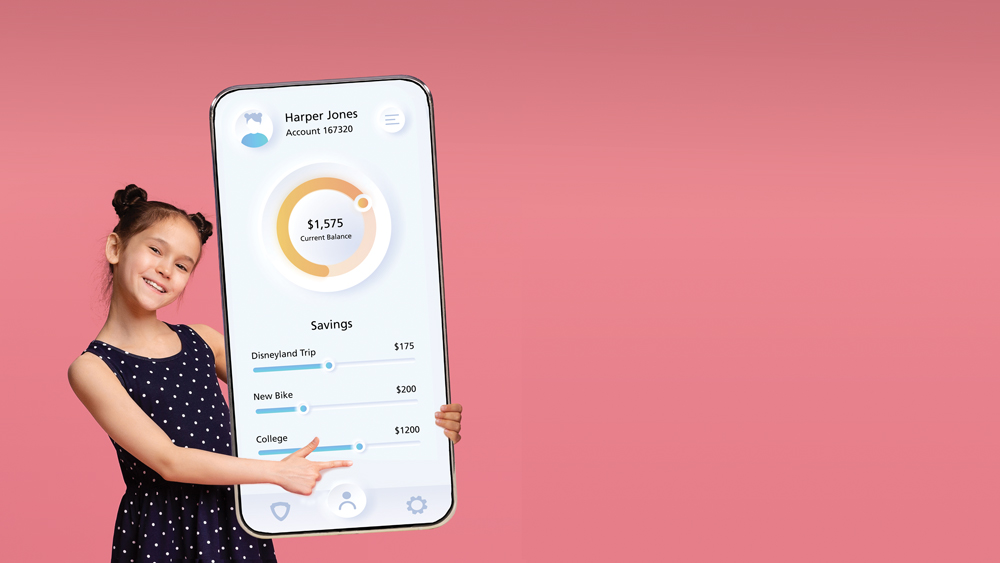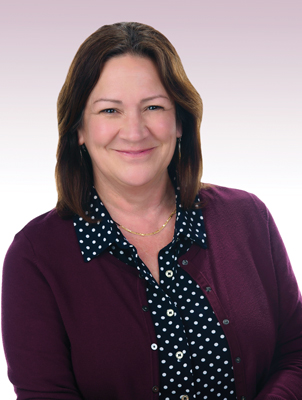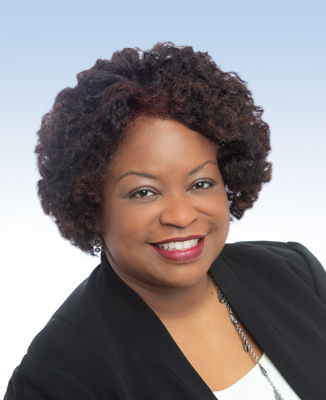
Budgeting one’s finances can be one of the hardest tasks for adults to navigate. It involves figuring out in advance the monthly (or yearly) amount to allocate for bills such as housing, utilities, groceries and transportation, as well as factoring in money for savings, vacations and life’s unexpected emergencies. When children understand what it means to save money for such expenses and much more, it will only help them to become responsible and financially stable as adults.
However, not all children are taught financial literacy at home and it’s not necessarily a part of the curriculum at schools. Some banks and credit unions are providing children and teens with an opportunity to learn about the value of opening their own savings account, setting goals and having good money management skills. The following North Bay institutions believe in the importance of financial literacy and advise parents to introduce the basics to their children at an early age.
Redwood Credit Union
One financial institution that teaches financial literacy to children of all ages is Redwood Credit Union. In 2004, RCU created youth accounts so that it could start educating children about finances, according to Cynthia Negri, chief administrative officer. Financial literary is at RCU’s heart, says Negri, because they believe it leads to financial well-being. “We learned in the Great Recession that folks didn’t have a lot of financial literacy and a lot of financial background. It was a difficult time for people,” she says, adding that the take-home point for RCU was that the sooner kids are educated about money, the better. “They can continue to learn financial literacy through their lives, and their longtime well-being is going to be the best thing for them.”

Negri believes parents should start discussing with their children the importance of saving money and there is no better time than when they are in preschool, since this is the time they witness the exchange of money for goods all the time. When parents take their kids to the grocery story or to a restaurant, she adds, it’s a good time to explain the difference between wants and needs, delayed gratification and why you don’t have to go out and spend your monies right away. “And that’s easy to do—even with kids as young as preschool,” she says.
Talking to children and teaching them financial literacy at such an early age provides them with a better understanding of financial concepts, says Negri, and it leads to their own financial well-being, which lasts a lifetime and RCU can help parents teach financial literacy. When a parent visits RCU with their child to open an account, she says, a staff member will explain what it means to have a savings account and to have good money habits. Selecting a trusted banking institution is also important.
“Saving with a financial institution you can trust and that you can build a relationship with, so you get to know their practices and they get to know you,” says Negri. “We believe in banking locally and choosing an institution that you feel you can trust over time.” Additionally, RCU teaches children about different online and mobile banking options and talks to them about what their goals are so they have a good understanding of savings. This leads to a goal and then children have a reason to save. RCU staff also teach kids the basics of how to use a checking account, and can set up savings accounts with goal-oriented names such as “New Bike” or “Disneyland Trip” to help keep their savings goals front and center.
“We walk them through all of those types of tips,” says Negri. “When kids are young, they receive a newsletter from us with financial tips, and we let them know how their account works.”
There are different types of accounts that children can open as a member at the Redwood Credit Union. For those 12 years and younger, there is an account called a Jr. Ranger Youth Savings, which requires an adult over the age of 18 years to assist in opening. With this account, kids can earn dividends, conduct online and mobile banking and receive a quarterly newsletter, which includes money-related stories and activities, such as games and tips on saving. Young members also receive a reward for saving money and can become a part of the M3 Money Club, which includes an adventure site with puzzles, games and more to help kids learn about being smart with their money. There is a $10 minimum balance required to open the Jr. Ranger Youth Savings.
RCU also offers a Jr. Partner Teen Checking and Savings account for children ages 13 to 17, which helps teens learn about saving and preparing for their future, and teaches them about possessing healthy money habits. As part of the Jr. Partner Teen account, members can also receive a free checking account and debit card with parental limits (setting daily debit limits from $40 to $800), and they receive a quarterly newsletter where they can learn about money management and can read articles on avoiding scams, saving and spending, building credit and will receive a free, one-time gift for reaching a savings balance of $250.
When members turn 18, the account transitions into an adult account with the option of opening a Start Smart checking account, which is available to members between the ages of 18 to 24 and features no minimum balance or initial deposit to open the account. It also offers a free debit card and rewards, free overdraft protection, person-to-person payments, nationwide ATM access and contains no monthly fees.
A Bite of Reality
Since 2013, RCU has offered the Bite of Reality program, which focuses on teaching high school students the importance of financial literacy and money management. The program, created by the Richard Myles Johnson Foundation, has been brought to different, local high schools throughout Marin, Sonoma and Napa counties. The program is a financial reality simulation.
Students are assigned an identity, which includes personal details of their status such as an occupation, salary, and whether they have a spouse and children. “Each of the kids is given a persona,” says Negri, “so they get a piece of paper, telling them ‘I am a construction manager, I make $40,000 a year and I have two kids.’ “From these identities, teens use all the details they are given to make real-world financial decisions while ‘purchasing’ basic needs needed to live with in the real world, like housing, groceries, transportation and dining from different stations,” she adds. “The exercise allows teens to experience how it is easy to overspend in the scenario they are given. Ultimately, the program’s goal is to teach teens to reconsider their wants versus needs.”

When the teens get into a bind with their finances and don’t know what to do next, they visit the credit union station and RCU helps them re-budget. Each station is trying to upsell to the teens because that’s what happens in real life, says Negri. People are upselling people all of the time. According to Negri, some of the teens participating in the Bite of Reality program are surprised at how soon their money is spent while having a career, having children and just trying to live life in the real world.
“You should see the looks on their faces when they’re like, ‘I don’t need child care because my mother will take care of my kids.’” An RCU staff volunteer will remind students that may not be an option—“grandma” may have other plans for her retirement. “It’s a real lesson,” says Negri. The Bite of Reality program gives students a taste of real life and the feedback from kids is mostly a resounding, “I had no idea” response.
“It’s the funniest thing to watch kids understand what real-life budgeting is like,” she says.
Though financial education is not currently mandated in schools, says Negri, it’s important to have this knowledge because it will help children and teens have a better understanding of how finances work. “Financial education is not a mandatory core curriculum in school systems,” she says, adding that Brett Martinez, president and CEO has spoken to legislators about trying to make it mandatory. “But it’s very difficult to take that route,” she says. “We’re going towards a grass roots let’s-do-everything-we-can [approach] for all of our communities and counties.”
Wells Fargo Bank
Another financial institution that believes in the importance of teaching financial literacy to children is Wells Fargo Bank. Darlene Goins, senior vice president and head of the banking inclusion initiative, says that teaching children about money can have a positive impact on their futures. “Researchers at Cambridge University found that by the age of 7, children start to form the savings habits that they take with them into adulthood,” says Goins. “So I think starting early is very important and that’s why some of the resources that we have with our Hands-on Banking program free financial education program, start in the pre-school range where our Wells Fargo employee volunteers go out into the community to schools and use picture books that have lessons about financial concepts.”

Another positive benefit to teaching financial literacy to young children is how it will help them in the future, especially if they plan to attend college. According to BankRate.com, for a child to have a savings account established in the child’s name—especially one that is designed for education—is associated with higher rates of college enrollment, graduation and academic achievement. “It’s important for them to have that foundational understanding of concepts at the earliest ages, such as needs versus wants, delayed gratification—which is tied to savings—all the way up to budgeting and the responsible use of credit in older ages; it prepares them for their financial futures. And if you think about it, high school students preparing to go to college where they may end up taking out student loans to pay for part of their education, those are some pretty, sophisticated concepts to have to learn on the fly. So building that up piece-by-piece as they grow up is really helpful in supporting them for their financial futures.”
One thing that Goins advises and encourages parents to do before their children open up their own savings account is to create mechanisms for their children to earn money, which can help build their savings. “I recommend that they think about their savings in three main buckets: One, setting side money for a long-term goal, so that starts to get towards that delayed gratification concept. Two, having set aside money to spend, so that when they go to a drugstore they want to buy something small. And three, then money that they can give to charitable organizations, so if the child has an interest in pets and animals, maybe they can find a charity that works with animals.”
Goins also recommends that children and teens pair their savings account with interactive financial education activities, such as Wells Fargo’s Hands-On Banking program, which is a free program and is available online at Youth.HandsOnBanking.org. The resources available at this website provide great tools for children and college-bound students to learn about money management. At the same time, she says children should also be encouraged to learn to set goals and save for them, and learn that when money is saved, it has the opportunity to grow with interest.
Wells Fargo Bank offers two types of accounts for children, depending on the child’s age. Goins discusses the difference between both accounts. “A parent or guardian can open a joint Way2Save Savings account actually starting at birth. We do require a co-owner for minors that are under the age 17,” she says. At 18, teens can then choose to open as the sole owner.
Other options for teens include the Clear Access Banking checking account, beginning at age 13 and the Everyday Checking account, beginning at the age of 17. The monthly service fee is waived for primary account holders who are under age 24 for Clear Access Banking. According to Goins, Clear Access Banking includes a checkless checking account that features no overdraft fees, which minimizes risk, but also gives teens some guardrails. Wells Fargo Bank does require teens ages 13 to 17 to have an adult co-owner on the account. Clear Access Banking provides the teen with real-world experience, allowing them to have a debit card and manage their money. The Everyday Checking account is better suited for ages 17 to 24, as well as college students because it allows them to write checks and doesn’t include a monthly service fee.
Financial savvy
Providing children with a working knowledge of money is a key lesson in life. Parents can help lead the way by helping their kids become financially literate, and banks and credit unions often provide educational tools and financial resources for people of all ages. And helping children and teens become financially savvy, will help them to have a better and financially-stable future.
Security Measures for Banking Accounts
With all the phishing scams circulating around the internet and web, it’s easy for people to become potential victims of fraud. An important measure that should not only be practiced by children and teens, but by adults too, is making sure their accounts are safe from harm. Following are some additional tips from the American Bankers Association Foundation.
Create strong unique passwords or passphrases for online/mobile banking and update them quarterly. Don’t use personal information for your password, such as your name or birthday, which are easy to discover.
Enable multi-factor authentication for online/mobile banking. It’s a second step in verifying who someone is, often through a text message or automated phone call.
Never share your personal identification number (PIN) or bank login information with anyone.
Don’t send any financial information via text message or email.
Don’t loan your debit card to anyone.
Use text or email alerts to send notifications about low balances, unusual activity, and online banking profile changes, such as adjustments to banking usernames and passwords.
Don’t access any personal or financial information on public Wi-Fi networks. There’s no guarantee of security.
Check your bank account balance and review your transactions for errors or unusual activity at least once a week.
Shred sensitive papers such as receipts, bank statements, and unused credit card offers before throwing them away.
Limit what you share when you’re online. Fraudsters prowl the web to obtain information on their targets and social media platforms are a hot bed of data for criminals.



